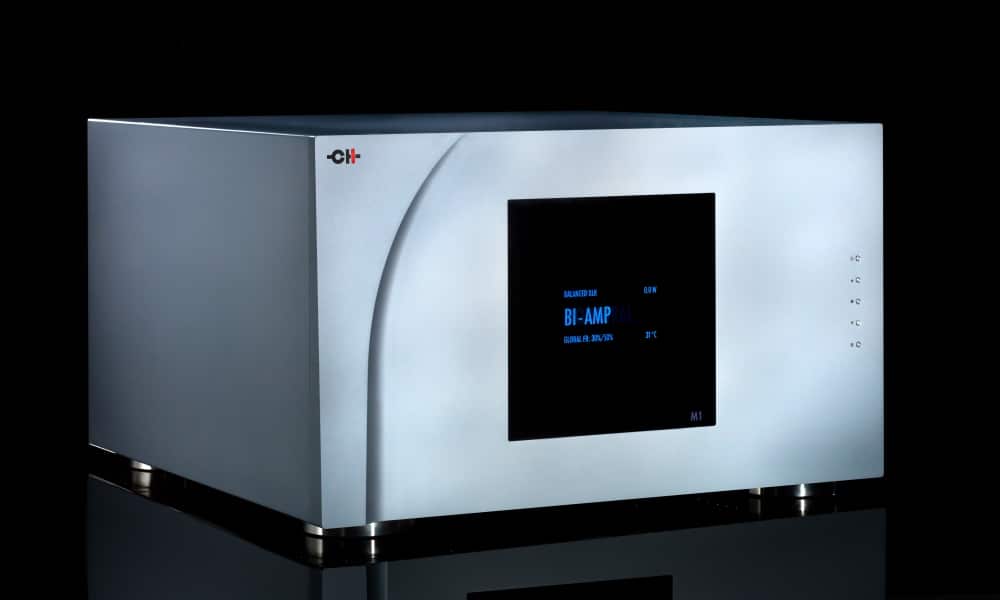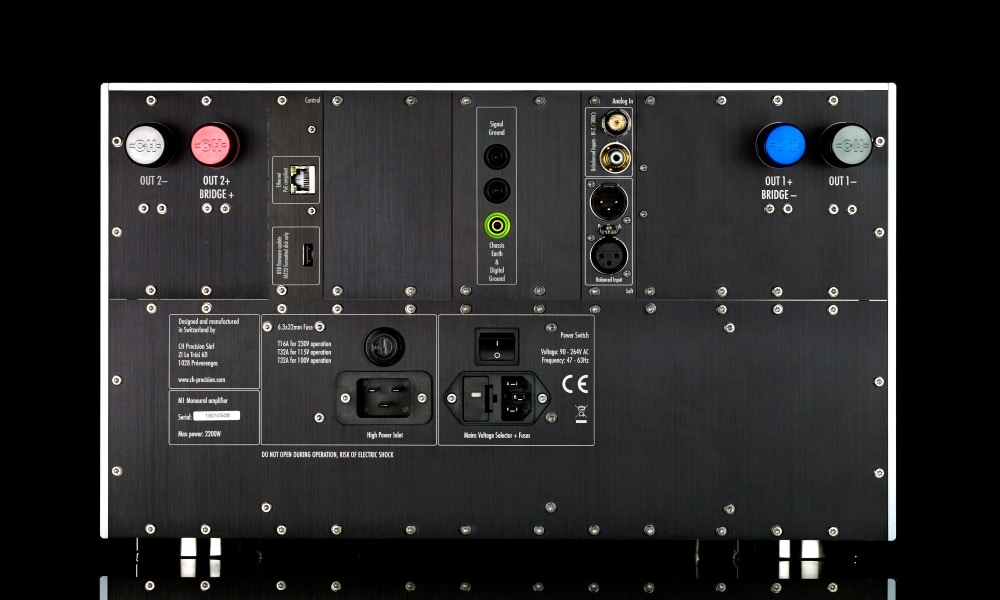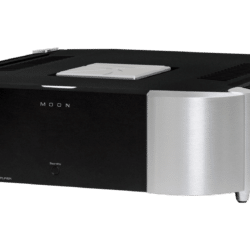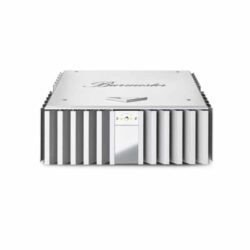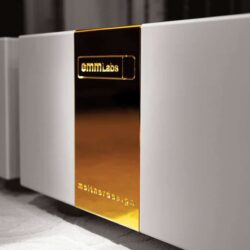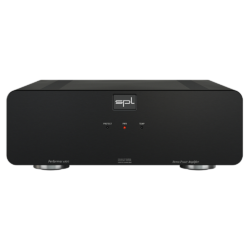Descrizione
Modularity
The M1 power amplifier was developped with modularity in mind. It can be equipped with a single analog input board in case the M1 is used for a single channel. This modularity ensures the following operation modes:
- Single channel mode
- Passive bi-amplification mode
- Active bi-amplification mode (requires a second Analog Input Board)
- Bridge mode
- Stereo mode (requires a second Analog Input Board)
Changing the M1 operating mode has been made easy and can be done on-the-fly from the front panel user interface. Only the available options are permitted depending on the hardware configuration.
Power Supply
The central power supply is taking most of the internal space inside the chassis. The huge 2’200VA transformer is mounted on silent-blocks to drastically reduce vibrations transmission into sensitive parts of the circuitry. It is shielded both with a magnetic and an electrostatic screen. The transformer’s plate is also secured for transportation.
For optimum thermal performances, the output stage diode bridges are mounted on the front panel inside the chassis and are of hyper-fast soft-recovery type.
The filtering capacitors are 4-poles types, which ensures that the in-rush current flowing through the rectifiers to refill the capacitors is kept away from the central ground point.
Analog stages
All analog stages inside the M1 are built only with discrete components, no operational amplifier have been used into these sections. This deliberate choice warranties the shortest audio signal path and allows the use of custom-made building blocks.
No capacitors have been used in the signal path, nor any output relay to ensure maximum transparency.
Gain
A gain range of 24dB – in 0.5dB steps – is embedded in each channel, for a perfect match with the loudspeakers’ sensitivity and room size. A lower gain is typically preferred for high-sensitivity speakers into a small room while a bigger gain is sometimes needed for large room with low-sensitvity loudspeakers.
This gain adjustment can also be useful with multi-amplified loudspeakers to adjust the level of the various drivers independently.
Output stage feedback
Unlike all other CH Precision’s analog stages, the M1’s output stage can be configured to have some global feedback. The global versus local feedback ratio is adjustable on-the-fly from the front panel user interface, only a few relays are switched during this operation. Ranging from 0% – local feedback only – to 100% – global feedback only, in 10% steps.
Independent feedback ratios can be set in bi-amplification modes.
Output stage bias
In order to keep the output stage distortion constant over time, the output stage’s bias must be kept as constant as possible. The bias is highly dependent on the output stage internal temperature – the transistor die – which can be known thanks to ThermalTrak devices from OnSemiconductor.
A very special circuit was built around the output stage which is taking into account both the temperatures of the heatsink and the transistors’ dies. It allows the amplifier’s output stage to keep its bias constant independently of the musical program and the room temperature.
In term of performances, the M1 class-AB design is outperforming a pure class-A design with usual bias compensation. This schematic is patent-pending.
Protections
Each channel’s output signal is permanently monitored – both in voltage and current – processed by a DSP, which computes in real-time the effective channel’s output power.
If an abnormal situation arises, the amplifier is immediately turned off to secure the connected loudspeakers. No output relay have been used into this amplifier, its symetrical structure allows a smooth turn-on and turn-off of the power supply without noticeable noise.
